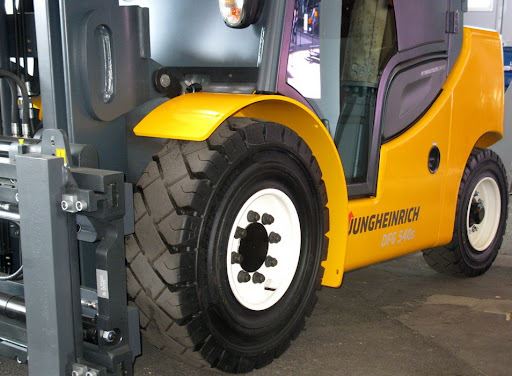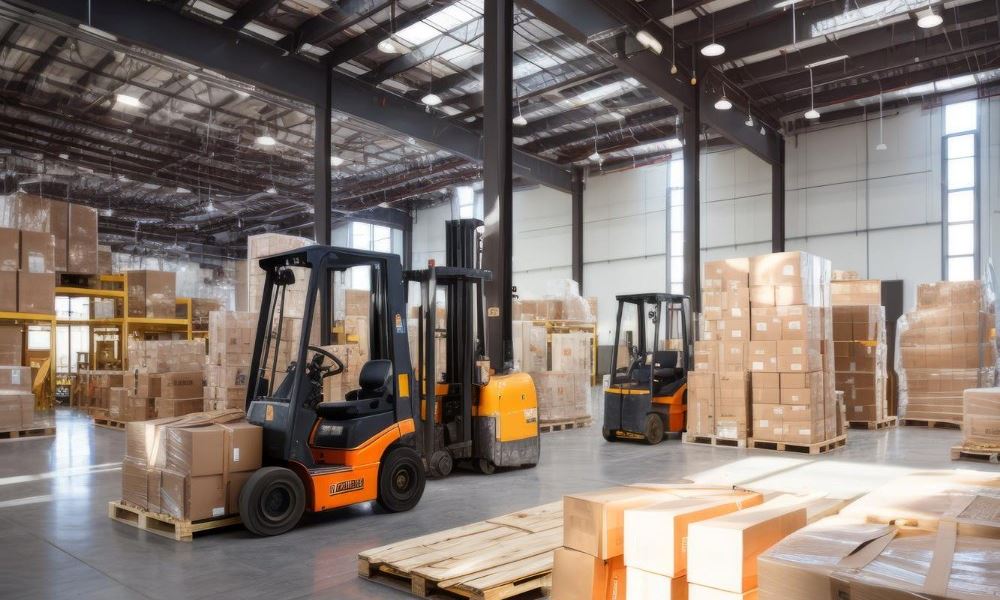Comparing Different Types of Forklift Tires: Pneumatic vs. Solid
When choosing quality tires for a forklift, it is necessary to take into account the features of different models that affect the cross-country ability and stability of the equipment. This is also an important aspect of work in the context of productivity, safety and comfort of the operator during work. In this article, we will tell you everything you need to know and how the main types of tires differ.
The importance of choosing the right forklift tires
Wanting to quickly choose tires for warehouse equipment, it is necessary to take into account the importance and responsibility of this event. Here are some basic parameters of the forklift operation, which especially depend on the selected model:
- Stability. The right tires can ensure even weight distribution and minimize the chance of tipping over;
- Comfort. The operator will be more comfortable if the vibration level is lower, and the smoothness of the ride will allow you not to strain during work;
- reduced vibration. This reduces operator fatigue and extends the life of the equipment itself;
- Maneuverability and control. Tires also determine how easily you can turn or brake on different surfaces.
The wrong choice can increase maintenance costs and create a hazard during operation. Therefore, it is necessary to carefully select the right option to reduce maintenance frequency and fuel consumption, while not forgetting about safety in the workplace.
Pneumatic tires: features and advantages
Quite often, pneumatic tires for forklifts are the first thing to consider before buying. They are filled with special foam or air inside, which provides high shock absorption and flexibility. Here are the main advantages:
- excellent grip. All thanks to the soft and large contact patch with the floor;
- Soft ride. Absorbs the air in the tire, which is especially important on uneven surfaces;
- reducing stress and vibration. This makes long-term driving easier.
This is a great option when you need good cushioning and reduced suspension wear. At the same time, these tires are prone to severe damage from punctures.
Solid tires: pros and cons
At the same time, solid forklift tires are made of dense rubber and do not contain air inside. This makes them more stable and unpretentious in operation. Among the advantages:
- Puncture resistance. Glass, metal or even sharp stones will not be able to quickly damage the tires;
- no need to pump. Due to this, the work will always be uniform;
- Minimal maintenance. Only visual inspection and replacement of elements as they wear out are required.
Disadvantages include high ride stiffness with minimal cushioning and increased vibrations. This is an excellent option for indoor areas where high requirements for reliability and intensive work are required.
How to choose between pneumatic and solid tires
When choosing pneumatic or solid tires for your forklift, you need to focus on the most important conditions for your specific job. Here are some of the main ones:
- type of coating. Pneumatic ones are better suited for outdoor work, and solid ones for indoor work;
- the level of floor contamination. The more sharp objects on the floor, the more dangerous it is to ride pneumatic models there;
- duration of operation. Solid-cast options withstand long-term operation better, but the operator will be more comfortable on pneumatic ones.
By evaluating all factors, you can choose the perfect option specifically for your forklifts and operating conditions. This will ensure long-term and trouble-free operation.
Forklift Tire Care Recommendations
The key recommendation from experts is to carry out regular and thorough maintenance and care. You should regularly inspect the tread and monitor the pressure to prevent increased wear. You should remove foreign objects from the floor and regularly check the sidewalls, where swelling may occur. Monitor the load and control the wheel balancing so that even at high speed there are no problems.


